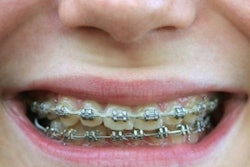
When you have a patient in your chair who you are considering referring to an orthodontist, or when you are talking with an orthodontist about treatment planning, what goes into that conversation? What does an orthodontist consider when beginning the treatment planning process? Knowing what an orthodontist is taking into account will also help you when referring patients.
 Vishal Sharma, DDS.
Vishal Sharma, DDS.While an orthodontist must keep in mind a patient's goals, budget, and lifestyle, several other crucial, more technical factors need to be considered when creating an individualized orthodontic treatment plan. There is no straightforward, one-size-fits-all approach. The approach entails careful evaluation and a multitude of steps, from diagnosis through treatment completion.
Identifying the patient's chief complaint is the first step. During the initial consultation, it is important to take note of this and also to clarify any myths surrounding the patient's chief complaint. For example, sometimes patients with severe overjet are only worried about a single proclined tooth. However, when educated properly about the pros and cons of malocclusion, they begin to appreciate what it means to have a healthy, stable occlusion. This plays a role in ensuring patients have realistic expectations and helps them understand the treatment.
"You don't know where you're going unless you know where you need to go." In other words, a diagnostic evaluation is a crucial second step. It is critical that all aspects of the diagnosis are accurate, including skeletal and dental classifications, overjet, overbite, crowding/spacing, periodontal architecture, crossbites, and temporomandibular joint (TMJ) status, to name only a few.
These first two steps will contribute to the third step, which is the development of the treatment plan. Multidisciplinary treatment must be considered to facilitate ideal aesthetics and occlusion.
The treatment plan is based on the patient's chief complaint and treatment education, a comprehensive diagnostic examination, and then ethnic norms and variations, which aren't always covered in dental school but are crucial to establishing patient trust.
3 crucial factors
"The Golden Rule," as it were, is the weight a practitioner assigns each of these next three factors. It will vary by orthodontist and patient. I use the term "guidelines," because not all patients are the same.
Bone health is the first guideline. Treatment plans should heed long-term bone health and responsibility -- that is, respecting the limits of bone architecture and not expanding excessively. This is followed by dental health, in that plans should be mindful of long-term dental health and stability -- for example, not proclining teeth too far. For this, we use Andrews' Six Keys to Occlusion: molar relationship, crown angulation, crown inclination, rotation, tight contacts, and curve of spee.
The third guideline is a patient's facial aesthetics. Patients come from a variety of ethnic backgrounds, for which orthodontic norms are far different than many of the Caucasian-based norms. It is necessary to recognize how these variations will factor into individual treatment plans. For example, sometimes an extraction pattern may not be the best option to avoid a concave facial profile, and sometimes extractions are the only way to relieve facial protrusion despite a lack of crowding.
Then treatment modality and retention are considered. Treatment modality is where the slew of treatment options come into play -- for example, a clear bracing system versus traditional braces. However, the use of a clear bracing system requires the same care and attention as fixed appliances, just as with any tool a dentist uses.
Appropriate retention must be planned on a patient-by-patient basis. An open-bite case will have different retention protocol and design than a deep-bite case, and the same goes for extraction versus nonextraction and spacing versus crowding, as examples.
This is a basic outline of how an orthodontist determines a course of action. As with any dental or orthodontic treatment plan, it will vary by patient and practitioner. Yet a thoughtful, comprehensive approach to orthodontic treatment will be effective and yield the best possible results.
Vishal Sharma, DDS, is a Surrey, British Columbia-based orthodontist and the founder of Aura Orthodontics. With a practice history that includes more than 400 complex orthodontic cases, Dr. Sharma develops new techniques and uses cutting-edge technology to make patients' treatments quicker, more aesthetic, and as pain-free as possible. He is also a faculty member in the department of orthodontics at the University of British Columbia, where he teaches third- and fourth-year dental students about new techniques, and how to use these techniques to achieve optimal results for patients.
The comments and observations expressed herein do not necessarily reflect the opinions of DrBicuspid.com, nor should they be construed as an endorsement or admonishment of any particular idea, vendor, or organization.



















